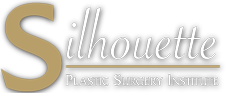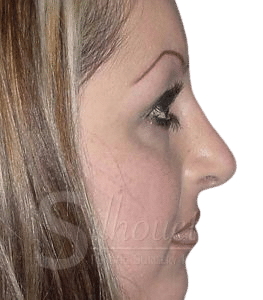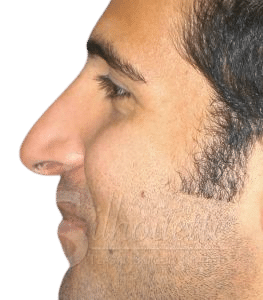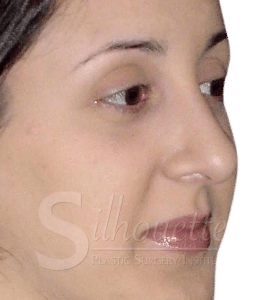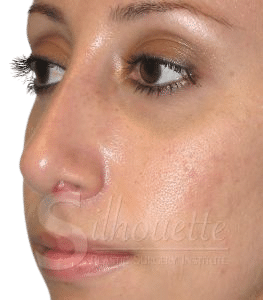Dr. Hootan Daneshmand
Revision Rhinoplasty in Orange County & Bakersfield
Revision Rhinoplasty Surgeon in Orange County & Bakersfield, CA
Every plastic surgery patient would be overjoyed with the results of their treatment in an ideal world. However, there are a variety of reasons why someone might not be fully pleased with the outcomes, both practical and aesthetic. This is especially true in the case of Orange County rhinoplasty and other nose surgeries. There are various techniques to conduct rhinoplasty, just as there are numerous reasons why a patient would opt to undergo a nose operation. Because of the procedure’s complexity, it may not always proceed as intended. That’s why many board-certified plastic surgeons like Dr. Daneshmand offer a revision rhinoplasty. The intent is to repair or revise the work of another surgeon in order to improve the aesthetics and functionality of the nose.
At Silhouette Plastic Surgery, we offer a wide range of cosmetic procedures to both produce your desired results and restore your confidence. As an Orange County plastic surgeon, Dr. Daneshmand takes great pride in his work. For more information on how we can help you achieve confidence within yourself, we invite you to contact our office for a free initial consultation. Call 949-359-8397 today, or fill out our online intake form.
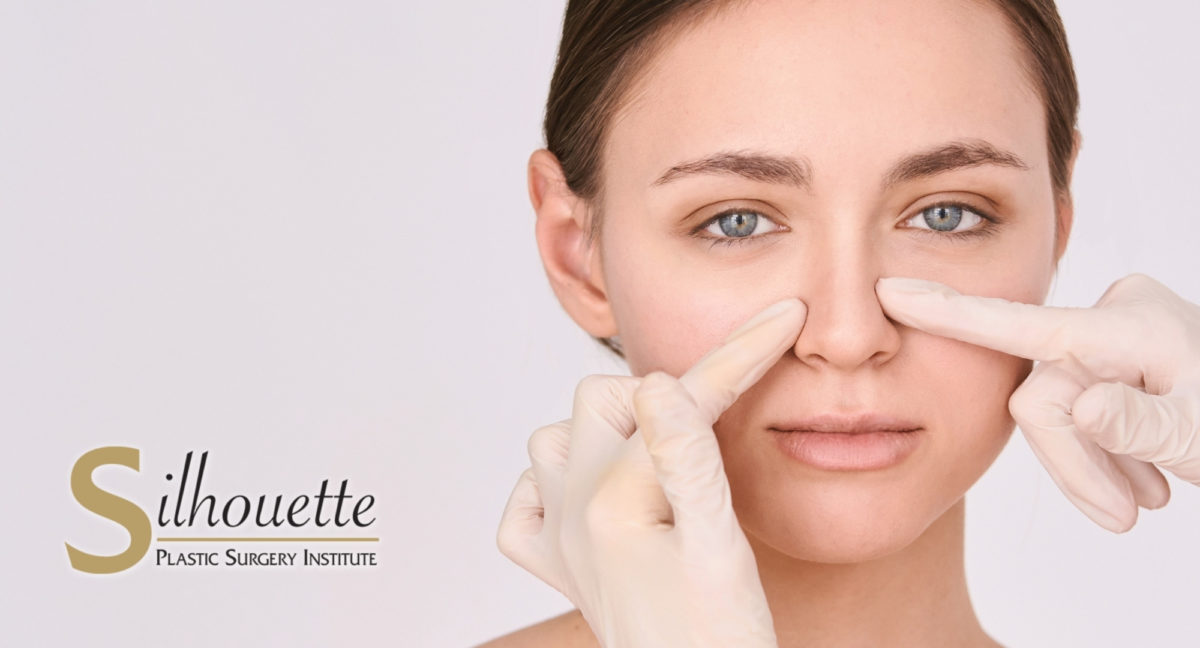
What Is Revision Rhinoplasty?
Rhinoplasty is one of the most difficult operations in plastic surgery. External abnormalities or breathing problems might arise even in the finest of hands following rhinoplasty. This is owing to the nose’s complex structure and the potential complications of healing. Therefore, it is not entirely uncommon for patients to undergo a revision rhinoplasty, or secondary rhinoplasty.
Revision rhinoplasty, or secondary rhinoplasty, is a corrective surgery aimed at improving the function and/or look of a nose that has already been operated on. Because rhinoplasty is a complicated procedure that happens in the middle of someone’s face, it takes great skill and training to perform these procedures. Especially in cases of revision rhinoplasty, it is extremely important to choose a board certified plastic surgeon for your procedure.
Because revision rhinoplasty necessitates returning to a wound left by a prior operation, Dr. Daneshmand must weigh many variables before proceeding:
- Scar tissue: Scar tissue is frequently present, which has deformed the underlying delicate structure to the point of appearing as a completely different nose. Sometimes, the anatomy is missing completely.
- What’s under the surface: After the anatomy has been revealed, it must be reshaped, and there may not be enough cartilage to do so.
- Condition of the skin: Scarring from the past can also have an effect on the skin.
- Functionality: Obviously, the nose needs to work as well. The airway must be evaluated and maintained at all times, which can be difficult in patients who want a smaller nose yet require more structure.
A detailed and personalized operation plan is required to rebuild the exterior contour and interior workings in accordance with the patient’s wishes.
Why Do Patients Want Revision Rhinoplasty?
When speaking with new patients, plastic surgeons highlight that full rhinoplasty results might take anywhere from six months to a year (or more) to show. But what if you don’t like the final result? What if there’s a problem lurking under the surface?
These are just a few of the reasons people may choose a revision rhinoplasty surgery:
- Prior complications: Due to the delicate nature of a rhinoplasty, it is entirely possible for a less experienced surgeon to make mistakes. These mistakes can lead to irregular shapes, asymmetry, and even functional problems, such as a deviated septum. Even if the surgeon makes no mistakes, sometimes the body simply does not heal as it should.
- Aesthetic changes: Especially if patients undergo rhinoplasty at a young age, revision rhinoplasty helps account for certain changes. Maybe their tastes changed as they grew older, or maybe their continued development altered the results of the procedure.
- Past experiences: Bad experiences in the past often leave patients feeling wary or hesitant about another procedure. However, this should not deter patients from seeking out a board certified professional to handle their revision rhinoplasty.
- Technology improvements: As is common in the world of surgery, technology and technique improvements happen often. When these advancements occur, many people have better experiences during a secondary rhinoplasty than during their first one.
Along with the above reasons, we have patients come in with a plethora of different cosmetic goals. We recommend always speaking with a board certified plastic surgeon to determine whether or not revision rhinoplasty is right for you.
Who Is a Good Candidate for Revision Rhinoplasty?
Anyone who finds themselves unsatisfied with the results of their rhinoplasty can consider a revision. However, most of the patients we see tend to have specific concerns about their results.
Some of the most common reasons patients opt for a secondary rhinoplasty include:
- Tip of the nose looks “pinched”
- Nostrils appear turned up
- Creases around or on the nose
- Difficulty breathing
- Excessively runny nose
- Profile that looks scooped out
Due to scarring and reduced cartilage in the nose, revision rhinoplasty is usually more difficult than the original operation. The operation is usually done under general anesthesia as an outpatient procedure. To reduce the possibilities of further scarring following surgery, the surgeon will employ the same incision patterns if possible.
What Is the Revision Procedure Like?
The procedure begins with general anesthesia to allow for a comfortable and painless operation. Depending on the specific circumstances, general or local anesthesia is acceptable.
Generally, surgeons employ an “open” approach for revision rhinoplasty. This entails a small incision across the skin between the nostrils. Then, the surgeon lifts the skin of the nose to gain access to the tissue beneath.
Finally, your surgeon makes the desired corrections. The technique varies greatly depending on the end goals of the procedure. As needed, the surgeon alters the soft tissue, bones, and cartilage of the nose. Lastly, your surgeon closes the incision with stitches.
Before Revision Rhinoplasty
You realize your rhinoplasty results aren’t what you expected, but what should you do now? It’s possible that deciding to have a revision may need even more study and screening than any of your prior operations.
Before you go under the knife again, consider the following points:
- Think about the timing. Depending on what went wrong with your first procedure and what you’d like to change, the amount of time you must wait before undergoing a secondary rhinoplasty varies. In some cases, doctors recommend that you wait for complete healing. In other cases, the sooner you schedule your revision, the better.
- Review your medical history. It’s important to gather as much information as possible about your first procedure as possible. The more information your revision rhinoplasty surgeon has, the better prepared they are to perform that revision.
- Voice your concerns. Make sure you know exactly what you’d like to change about your nose, and don’t be afraid to explain everything to your surgeon. The more specific you are about your expectations, the better the procedure plan will be.
- Know the risks. Any surgery involves a certain degree of risk. However, revision procedures tend to involve more risk. With a revision rhinoplasty, some of the risks include more scar tissue and complications with the healing process.
- Plan for your recovery. Revision patients have already had at least one rhinoplasty, so they are familiar with the healing process. Healing from the revisions will, in general, be a familiar feeling. Nevertheless , it’s critical to follow your surgeon’s pre- and post-operative care recommendations for the greatest outcomes.
What Is Nose Revision Recovery Like?
In the majority of situations, a patient will be able to return home the same day as their operation. This person will require the assistance of a friend or family member to drive him or her to and from the surgical facility, as well as to wait for treatment. It’s also crucial to have someone accompany you for the first 24 hours after surgery.
The rhinoplasty recovery time usually lasts one to two weeks, and patients are required to stay at home for seven to ten days after surgery. Following the surgery, a splint will be put on the patient’s nose, which will be removed one week later. Nasal packing is not required in the majority of revision rhinoplasty patients.
In the days following surgery, patients should expect swelling, pressure, and pain or discomfort. Dr. Daneshmand will likely prescribe a pain medication to help with pain management. For revision rhinoplasty patients, breathing through the nose might be difficult in the first few days after surgery. Within two weeks following surgery, the patient should be able to breathe clearly.
Within 48 hours following treatment, a patient should be able to resume mild activities such as strolling about the house. For the next three weeks, he or she should avoid any actions that might cause the nose to bleed, such as leaning over, heavy lifting, and blowing the nose. To avoid bruising or swelling, revision rhinoplasty patients must keep their heads elevated while resting, relaxing, or sleeping for at least one to two weeks after surgery.
Lastly, it is important to understand that recovery is a long process. For the first year after surgery, we recommend meeting with your plastic surgeon at least once every three months.
How Much Does Secondary Rhinoplasty Cost?
The cost of revision rhinoplasty is usually more than the cost of initial rhinoplasty.
A revision can cost $10,000 to $15,000 if a first nose operation costs $7,500.
Your health insurance may pay any portion of the expense that is directly connected to treating airway issues, but you will be responsible for any aesthetic modifications.
If the expense of rhinoplasty is exorbitant, inquire about monthly payments with your physician.
Best California Revision Rhinoplasty Surgeon
If you are unhappy with the way your primary rhinoplasty turned out, whether for functional or aesthetic reasons, Silhouette Plastic Surgery has options for you. As a board certified plastic surgeon in Orange County, Dr. Daneshmand has extensive experience in a wide variety of procedure types. To schedule a consultation at our Newport Beach plastic surgery center or our Foothill Ranch plastic surgery center, please call 949-359-8397 today, or fill out our online intake form.
